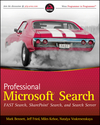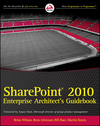Document center
Document libraries now allow end-users to select multiple document, upload documents with drag and drop option. Tag documents with tag such as "I like it" which will make them easily available on MySite, this way you can always refer to them later. At the same time users can be more specific about tagging by means of tagging with taxonomy and view suggestions for taxonomy.
- Documents rating provides social tagging of the documents with comments provided by end-users.
- Hierarchical Taxonomy can be shared not just across site collections but across entire Farm.
Documents are now identified by their respective document IDs. With custom setup for ID mapping, ex: you can specify that document IDs in a library can be mapped to "HR_Policies_2009_XXXXX. At the same time if needed existing documents IDs can be reset to specific ID schema.
Reach client application for editing documents (most popular office formats) directly from the browser, perfect in scenarios when users access environment form kiosk computers or from the road.
Records Management features.
Documents can be declared as records from within the doc libraries. Compliance details can be viewed from the document edit drop down menu. Granularity of the complience goes down to the folder level.
·"send to" menu option can be set up to send documents to multiple records management centers, not just 1 as it is in 2007. You can also "Send To" by means of Move the document, copy the document, or move it and leave a link to it so it is still accessible from within the document's original library.
Retention policies can be set up:
- per content type
- per libraries and folders
Folders are being looked at as means of security and retention policies granularity. Nested folders can either inherit policies from parent or have their own.
Retention policy consists of retention stages. There can be multiple stages set up for policy, stages that can fire off after specified period of time, ex: after 90 days move document somewhere, then after a year another stage might delete the document.
Taxonomy
Managed metadata
- auto complete from managed term set
- managed term sets are taxonomy
- taxonomy is geared towards foxonomy
- terms sets can be managed by individuals or by owners of the part of the taxonomy
- Central taxonomy
- Create your own taxonomies
- Taxonomy structure tree view
- Taxonomy store (centralized service)
- Taxonomy term store
- Multi language support for taxonomies
Modifications that can be done by end users to the taxonomy, depending or rights.
- copy term sets (taxonomy branch)
- move branch or term
- deprecate term
- merge terms
- reuse term sets
- specify owners and security for term sets that will control governance for taxonomy
- specify terms that are available for tagging or make them just grouping categories for term sets.
Document sets
Folder like structure for grouping multiple documents together with advanced capabilities, almost like folder with special meaning
- Provision multiple content type docs in one doc set
- Add Web Parts on the landing page of the doc set, ex: description or instructions, or even dashboard
- Automate repetitive content creation – EX: response to RFP
- Allows consistency and process insight
- Foundation for document assembly
Content Types
- Content types Syndication
- Sharing across site collections and across forms
- Content type hub site- central management location for CTs
Content organizer
Automatic routing of documents appropriate place in SharePoint. This is true Document management System feature, end users don’t even have to be aware of SharePoint and think which document library this document should go into. now they just work in word or office and SharePoint moves documents that were submitted by users to appropriate place, based on:
- Rules for content rerouting
- Metadata
- Content Types
- Property based conditions
- Can apply multiple rules
Enjoy







1 comment:
See some more information on Taxonomy Services at
Taxonomy Services in SharePoint 2010
and Document Sets @
Document Sets in SharePoint 2010
Post a Comment